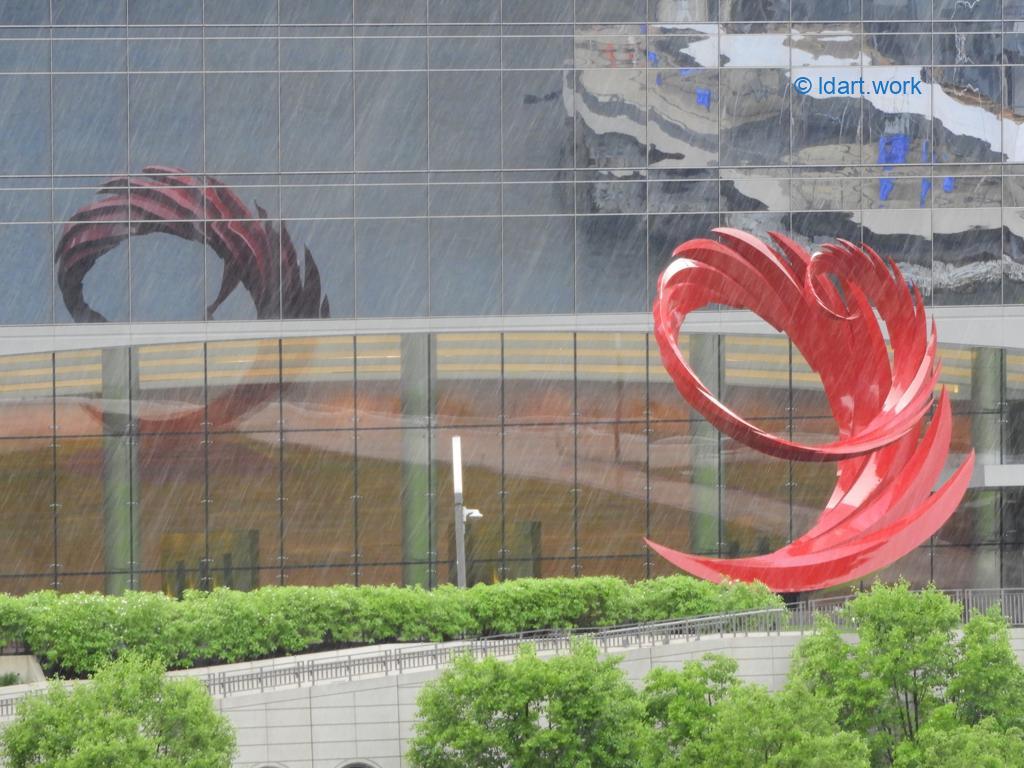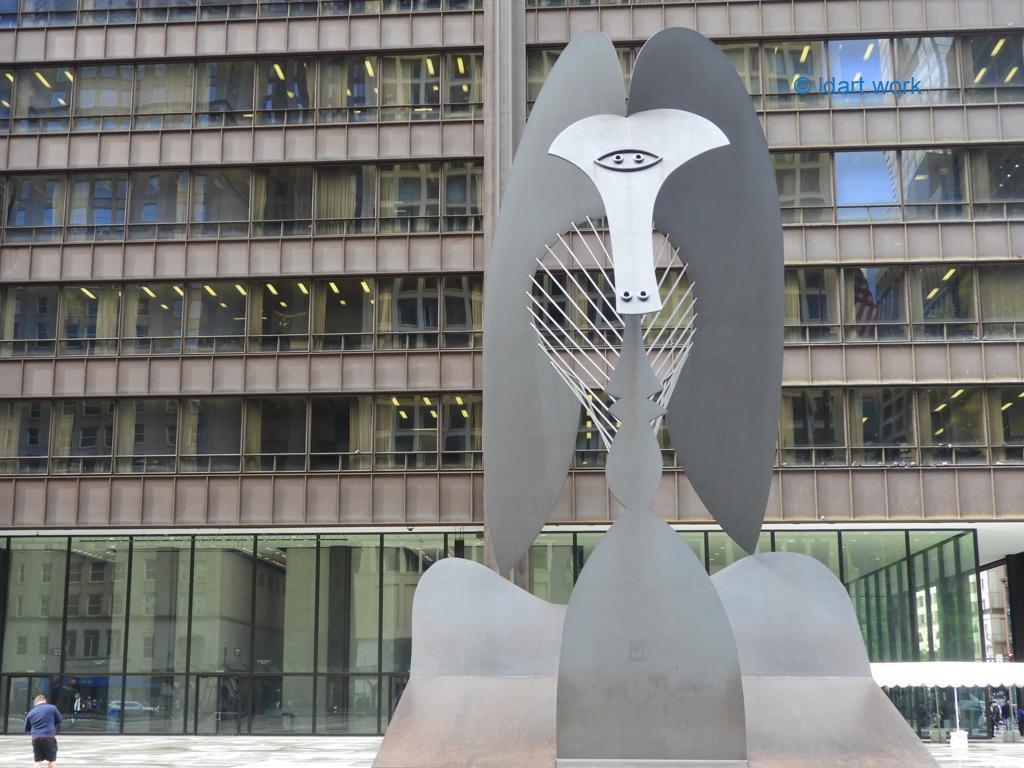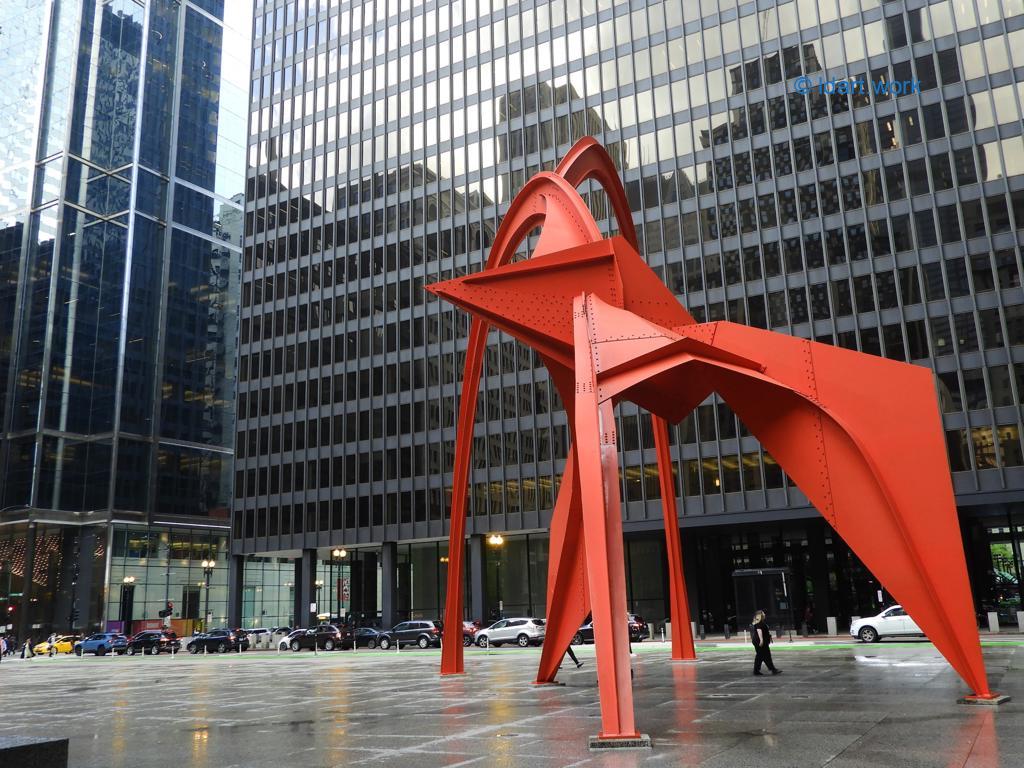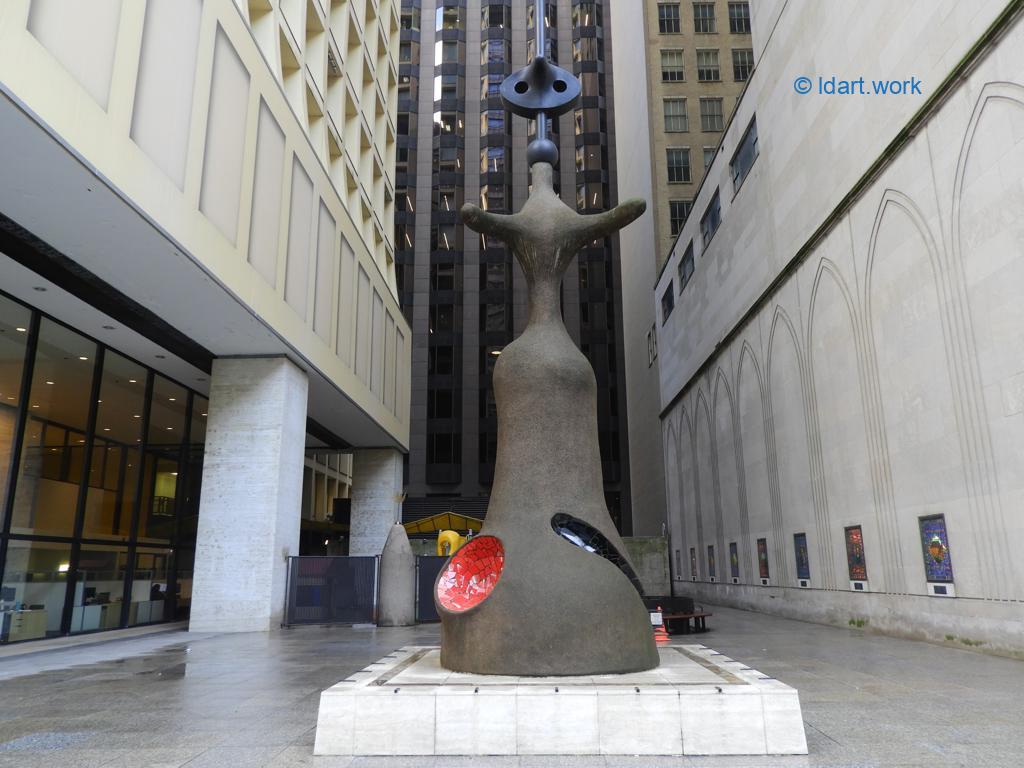


(texte en français ci-dessous)
Chicago monumental sculptures
When, around you, there are only skyscrapers, each one taller and more beautiful than the other, one solution, if you want to decorate the public spaces at their feet, is to order monumental abstract sculptures
This is what architects, decision-makers and various commissions did in some places in Chicago starting in the 1960s, hence replacing the traditional commemorative sculptures with more modern and unexpected works.
A walk in the Loop is therefore an opportunity for original artistic discoveries, and here is a sample of what you can see on your way if you follow one or more of the four Walks in Chicago which explore the city center:
The first photo, which complement the photo illustrating this article, is undoubtedly the city’s most famous monumental sculpture, the Cloud Gate, commonly nicknamed the Bean. It is located in Millennium Park and was designed by Anish Kapoor. Its creation was a technical feat and when you go there, don’t forget to pass under it, the reflections are astonishing.
The second photo represents The Constellation, or The Calatrava in reference to its creator, Santiago Calatrava. Finished in 2020, it is located at River Point Park along the Riverwalk and is reflected in the facades of neighboring buildings.
The third photo is also that of the first monumental sculpture in Chicago of this type and is the fruit of the imagination of Picasso who said he was inspired by the Afghan dog he had at the time. It has no name other than The Picasso and although it was the subject of a commission by the architects of the skyscraper behind it, it is a gift from the artist to the city.
The fourth photo represents The Flamingo, a stabile by Calder whose open and slender structure evokes movement and space. You will find it, like the three previous ones and the last one, by following the Walk in Chicago Walk # 1, the river and the center of the Loop.
The fifth photo is a sculpture by Miro, The Sun, the Moon and a Star, and it’s nearly in front of The Picasso. Commissioned in 1969, it only saw the light of day in 1979 due to an initial lack of sufficient funds.
The sixth photo is not strictly speaking the photo of a sculpture, but a part of the Jay Pritzker Pavillion seen from E. Washington St. This pavilion, a vast brushed steel shelter intended for outdoor concerts, was designed by Frank Gehry and its particular shapes also make it resemble an immense sculpture, hence its place here. It is also in Millennium Park not far from The Bean and along Walk in Chicago # 2, the east of the Loop.
There are, in fact, many other sculptures in the Loop, some more traditional, some of more modest sizes, but it is now up to you to discover them randomly during your walks!



Les sculptures monumentales de Chicago
Quand autour de vous il n’y a que des gratte-ciels plus hauts et plus beaux les uns que les autres, une solution est de passer commande de sculptures monumenales abstraites si vous voulez aménager les espaces publics qui sont à leurs pieds.
C’est ce que les architectes, décideurs ou commissions diverses ont fait à certains endroits de Chicago à partir des années 1960, remplacant la traditionnelle sculpture commémorative par des oeuvres plus modernes et plus inattendues.
Une promenade dans le Loop est donc aussi l’occasion de découvertes artistiques originales et voila un échantillon de ce que vous pourrez voir sur votre chemin si vous suivez une ou plusieurs des Promenades à Chicago qui vous font explorer le centre-ville:
La première photo qui reprend la photo illustrant cet article est sans doute la sculpture monumentle la plus connue de la ville, le Cloud Gate, communément surnommé le Bean. Elle se trouve dans le Millenium Park et a été conçue par Anish Kapoor. Sa réalisation a été une prouesse technique et quand vous y allez, ne manuqez pas de passer dessous, les reflets sont étonnants.
La deuxième photo représente The Constellation, ou The Calatrava en référence à son créateur, Santiago Calatrava. Finie en 2020, elle est située au niveau de River Point Park le long le long du Riverwalk et se reflète dans les façades des immeubles voisins.
La troisième photo est aussi celle de la première réalisation monumentale de ce type à Chicago et elle est le fruit de l’imagination de Picasso qui a dit s’être inspiré de son chien afghan de l’époque. Elle n’a pas de nom sinon The Picasso et bien qu’elle ait été l’objet d’une commande par les architectes du gratte-ciel derrière elle, elle est un cadeau de l’artiste à la ville.
La quatrième photo représente The Flamingo, un mobile immobile de Calder bien que sa structure ouverte et élancée évoque le mouvement et l’espace. Vous la trouverez, comme les trois précédentes et la dernière, en suivant la Promenade à Chicago numéro 1, la rivière et le centre du Loop.
La cinquième photo est une sculpture de Miro qui fait face à celle de Picasso, Le soleil, la lune et une étoile. Commandée en 1969, elle n’a finalement vu le jour qu’en 1979 faute de fonds suffisants à l’origine.
La 6ieme photo n’est pas à proprement parler la photo d’une sculpture mais une partie du Jay Pritzker Pavillion vue depuis E. Washington St. Ce pavillon, un vaste abri en acier brossé destiné à des concerts en plein air a été conçu par Frank Gehry et ses formes particulières le font aussi ressembler à une immense sculpture d’où sa place ici. Il est lui aussi dans le millenium Park non loin de The Bean et le long de la Promenade à Chicago numéro 2, à l’est du Loop.
Il y en a en fait bien d’autres dans le Loop, certaines plus traditionnelles, certaines de tailles plus modestes mais c’est à vous maintenant de les decouvrir au hasard de vos promenades.